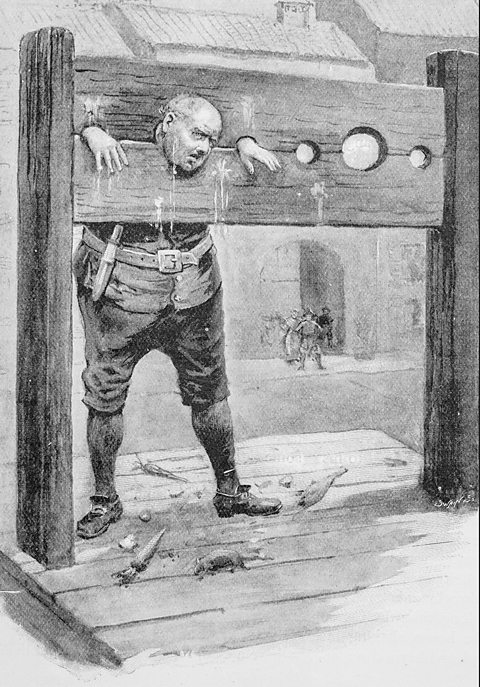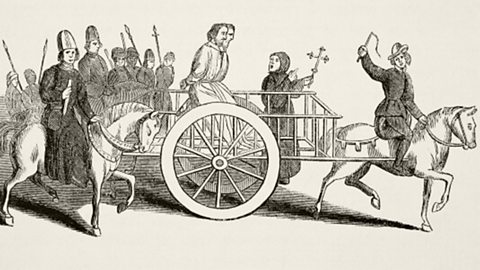Punishments
A range of punishments were used to make criminals suffer and to deter other people from committing similar crimes.
Petty crimes
Fines
Fines were a common punishment for petty crimes - minor crimes which were not considered to be serious when compared to other types of crime. The table below shows where the money went from fines issued by each type of court.
| Type of court | Who received the money? |
| Manor courts | The lord of the manor |
| Church courts | The Church |
| Borough courts | Mayors and other town officials |
| Hundred courts and the quarter sessions | The king |
| Type of court | Manor courts |
|---|---|
| Who received the money? | The lord of the manor |
| Type of court | Church courts |
|---|---|
| Who received the money? | The Church |
| Type of court | Borough courts |
|---|---|
| Who received the money? | Mayors and other town officials |
| Type of court | Hundred courts and the quarter sessions |
|---|---|
| Who received the money? | The king |
Public humiliation

There were several types of public humiliation:
- Scolds were often punished by being forced to sit in a cucking stool. This was a kind of wooden chair or toilet. They were then dragged around the village for everyone to look at.
- The stocksA wooden frame with holes to hold the feet of someone convicted of a crime. and the pilloryA wooden frame with holes to hold the head and hands of someone convicted of a crime. were used to punish traders who cheated their customers.
Imprisonment
There were also various types of imprisonment:
- Long-term imprisonment was not generally used for serious crimes, although some people did end up spending months in prison while they awaited their trial.
- Imprisonment was used to punish crimes such as forgeryCreating something to look like the real thing. Usually artwork, money or official documents. and debt, and for people who couldnât pay the fines given to them.
Gaols, where prisoners were held, did not supply bedding or food. Prisoners had to purchase these things themselves.
Serious crimes
Serious crimes could be punishable by death. The method of execution usually depended on the type of crime. Executions took place in public in order to act as a warning to others.
Hanging
People who were found guilty of the following crimes would be executed by being hanged:
- murder
- burglary and robbery (even if nothing ended up being stolen)
- theft of goods worth more than 12 pence (from 1275)
Hanging, drawing and quartering
Hanging, drawing and quartering was the punishment for people who committed high treason (plotting to kill the monarch) and for counterfeitA fraudulent copy. gold or silver coins. The guilty person was:
- hung by the neck but brought down while still alive
- disembowelled - some of their organs were removed
- cut into four pieces
Burning
People who were guilty of petty treason or heresyA belief or opinion which disagrees with the teachings of the Church. could be burned alive on a bonfire. Under Henry VII, who was king between 1485 and 1509, 11 people were burned for holding LollardA follower of John Wycliff. Wycliff believed that churchmen should lead simple lives and that the Bible should be translated into English. beliefs as they were considered to be heretics.

Local variations
Until the mid-14th century, some local areas had their own methods of execution:
- In Dover, people could be thrown from the cliffs.
- In Sandwich, serious criminals might be buried alive.